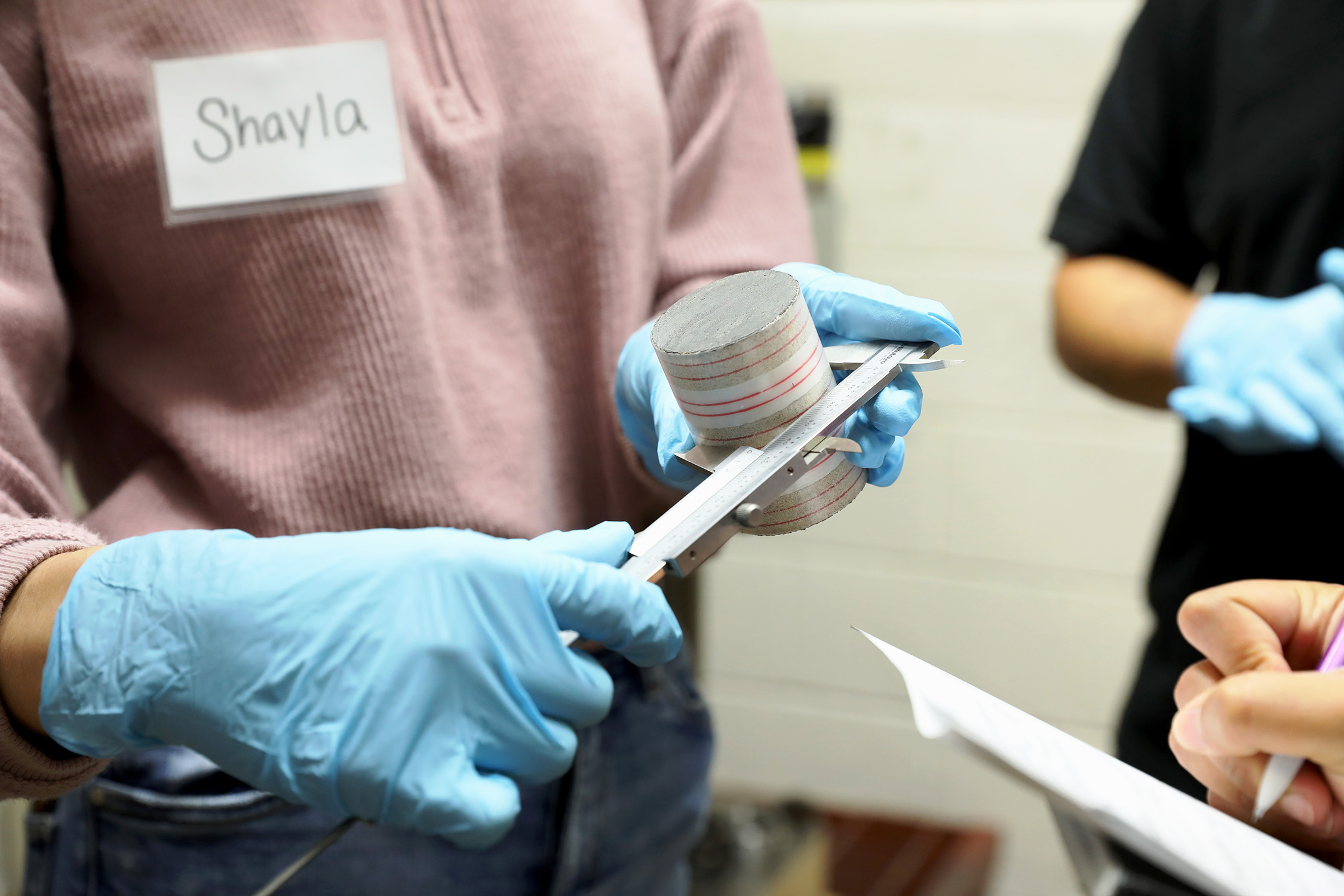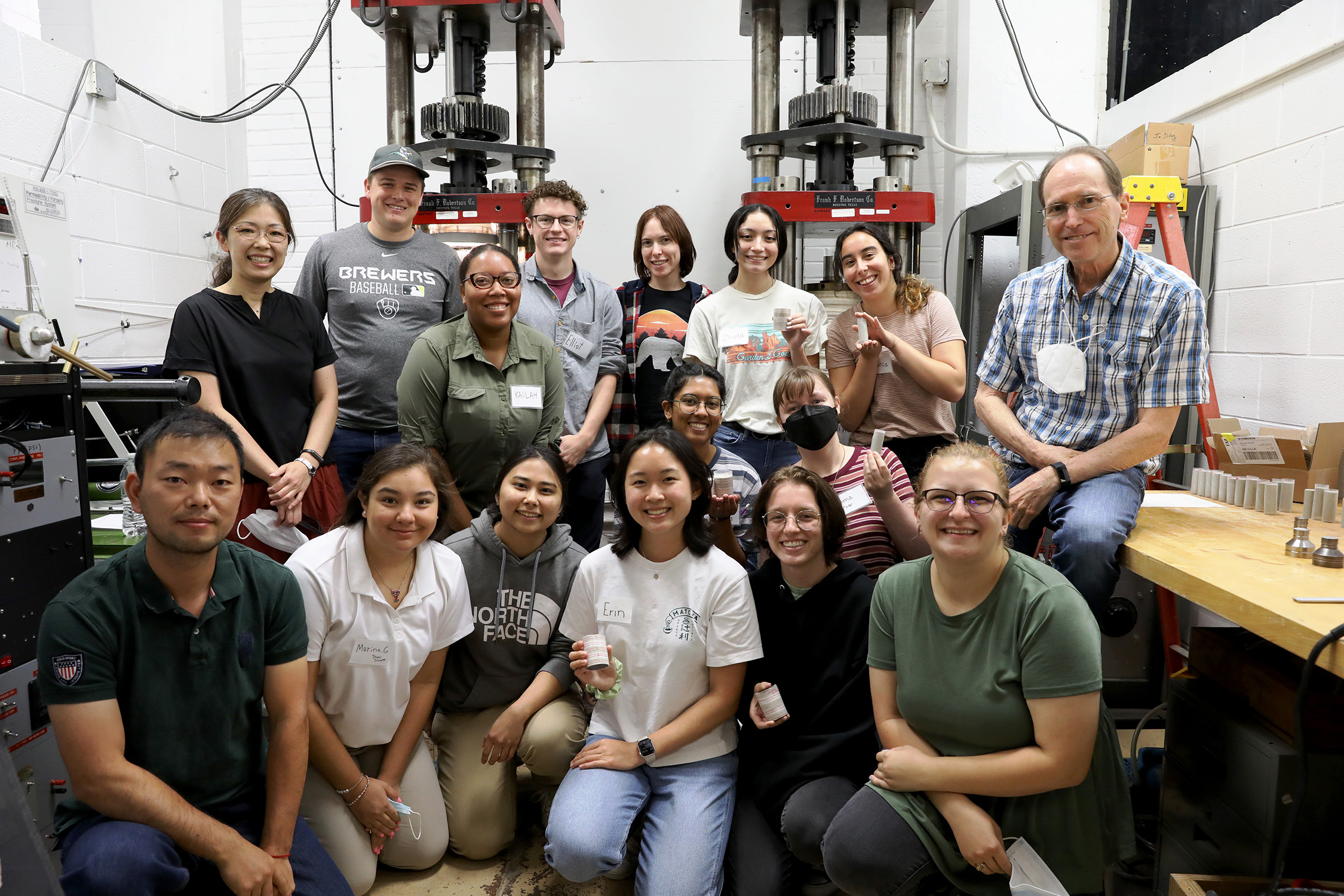
It’s been said doing things well once in Aggieland establishes a tradition. Building on the success of its inaugural Rock Deformation Summer School last August, the Department of Geology and Geophysics at Texas A&M University is gearing up to host its second annual Geology & Geophysics Undergraduate Summer School, set for August 14-18 on the Texas A&M campus.
Applications are due May 28 for the one-week event that provides undergraduate students from across the nation and all majors with a unique opportunity to conduct research while working side-by-side with Texas A&M Geology and Geophysics faculty, graduate students and research scientists, including several affiliated with the interdisciplinary Center for Tectonophysics.
All accepted students attend the school free of charge, notes Dr. Julie Newman, professor and head of Texas A&M Geology and Geophysics, which covers all related travel expenses, including transportation, lodging and meals during the week. As an added bonus in addition to rock mechanics, Newman says this summer's participants will be able to choose to explore marine micropaleontology, geochemistry or mineral physics.
Last year, 11 undergraduate students from nine U.S. universities participated in the weeklong immersive experience developed by Dr. Hiroko Kitajima, Dr. Frederick Chester and Dr. Xiaofeng Chen. The students learned about research in experimental rock deformation through intensive hands-on laboratory activities designed to hone their analytical and problem-solving skills while introducing them to state-of-the-art equipment and instrumentation and allowing them to explore their potential for graduate study and research-based careers.
“We had wanted to run some kind of summer research experience for undergraduates for some time,” Chester said. “After successfully integrating experimental rock deformation activities as a basis for research projects in our Geology and Geophysics senior capstone course, we had sufficient experience to design an activity for a weeklong summer school. The instructors enjoyed meeting and working with the diverse and enthusiastic group of students in our first summer school, and we look forward to another positive experience this August.”

The 2022 cohort was divided into three groups, each assigned to different but related research projects. After being introduced to their research projects and the laboratory on the first day, the visiting students began group activities that included preparing rock samples for testing, understanding the basics of instrumentation and digital data collection, conducting rock deformation experiments and analyzing mechanical and observational data to test their hypotheses. In addition, each group worked to prepare for their presentation on the afternoon of school’s final day. Time also was set aside throughout the week for social events, meeting students and faculty from the department, and touring the campus.
Kitajima said the majority of the students’ time was spent performing laboratory experiments under the mentorship of Geology and Geophysics undergraduate and graduate students using a couple of the unique rock deformation apparatus housed in the John W. Handin Laboratory.
“One of our goals was to increase the visibility of the Center for Tectonophysics, our department and the experimental rock deformation community,” Kitajima added. “Few Geosciences programs in the United States have rock deformation laboratory facilities like the ones we are fortunate to work in every day at Texas A&M.”
Group projects included unconfined compression tests on Berea sandstone samples prepared along different orientations relative to its lamination, triaxial deformation tests on saw-cut cylinders of Carrara marble to map out the brittle-ductile transition and triaxial deformation tests on layered specimens composed of Indiana limestone and Carrara marble or Berea sandstone.
“The students did a good job in meeting the challenge,” Chester said. “[They] completed a suite of experiments in one week that are usually done over one semester.”
At the end of the week and as a surprise to their instructors, the students presented hand-drawn thank-you cards featuring beautiful pictures of the research equipment to all the professors, researchers and graduate students involved in the summer school.
“Our first rock deformation summer school was a great experience for the students and for the department,” Newman said. “We are excited to be able to offer it again to another class of aspiring geologists and geophysicists, and we look forward to another week of inspirational education and insight into world-class research and the broader discovery process.”
See additional photographs from the 2022 event and learn more about geology and geophysics graduate programs at Texas A&M as well as related careers.

